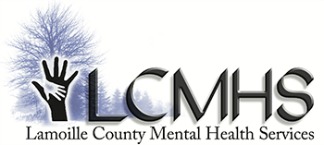Suicide Does Not Discriminate
By Lila Bennett, formerly of Northeast Kingdom Human Services, a Non-Profit Designated Agency of the State of Vermont and member of the Vermont Care Partners

Did you know that one person dies by suicide every three days in Vermont? The most common age range is youth 12-15, but people across all ages and demographics are struggling. In recent years, we have seen powerful celebrities who exude happiness, such as Robin Williams, take their own lives. Wealth or material comfort does not help ease what may be going on inside a person. Suicide is spreading across every age range, race and economic spectrum. Suicide is a touchy word and something that many people try to avoid thinking or talking about. Some people even believe that talking about suicide will encourage it. Studies are finding that not only is that false, but talking about suicide is the single most effective way to help someone find their way through it, to move past the thoughts and feelings of hopelessness and shame that go hand in hand with suicide.
When friends or family members have struggled with depression, self-harming behaviors such as cutting themselves, substance use and other destructive actions, we as a society have often cast shame on the person, or said they were “looking for attention.” This perspective is flawed. Human connection, at the very base, is what is driving most of us to live our lives. Human beings are constantly seeking a sense of purpose, of acceptance, of connection and understanding. The first step in helping to reduce the rate at which people are choosing suicide is to accept that seeking attention is a good thing, to look at why they may need it, and to give our attention where it is needed.
There is no person in the world who is happy about self-harm or feeling so worthless that suicide feels to be the only solution. What is causing so many of our friends and neighbors to slip into the depths of suicidal hopelessness? Risk factors include a mental health issue such as depression, a substance use disorder, or a combination of those things. Research has found that more than 90% of people who die by suicide are experiencing these risk factors. Also, individuals at a higher risk include those who have had a previous suicide attempt, firearms or prescription drugs in the home, a family history of suicide, or family members also struggling with suicidal thoughts. Also, there are a few cultural factors that are at play:
Social Media was invented as a means to connect more easily with each other, but what it has turned into is a platform for perfection. Shields of beauty behind which lies all the ugliness we don’t dare share with the world. The pressure of this perfection is a lot to bear, especially for young people growing up in this new world. Shame used to be in the form of our parents saying, “you’re fine” or “toughen up,” or, “I’ll give you something to cry about.” But today, shame is in the form of texts you can’t see, rumors floating all around about you that you sense but don’t know. Our shells are becoming harder, our smiles prettier, and the shame and fear of being judged has to get buried even deeper.
It is up to all of us as a culture to be open about struggle. There is not a single human being- wealthy or not, young or not- who won’t face extreme challenges in their life. As a culture, if we can teach ourselves - to listen, to understand, to not be so perfect, and to be more tolerant, perhaps the pressures of perfection can ease and happiness can prevail.
It is often said that Suicide is a temporary solution to a permanent problem. When someone has slipped to such depths of despair, it is hard to help them feel their worth, or see beyond the problem. Offering hope can save a life. Saying to a person, “are you thinking about killing yourself?” is a way to invite them to speak about their problems. Saying to a person, “you aren’t thinking about killing yourself, are you?” is a shaming question, that will close the door, and not provide hope. It is important that we always look at how we are talking to a person who is very sad. Reminding them of the good in their life, of the people who love them, is a good place to start. Telling someone how they “should” feel though, will not help them feel that way. The reasons that people struggle with suicide are diverse, and learning how to be tolerant and understanding is the first step in supporting someone who may be experiencing these thoughts. There are agencies across the state that can provide support in times of crisis as well as education about how to understand the warning signs. At the very base, the way we can help people get through it, are very simple: Providing hope through love and listening will go a long way.
The next article in this series will discuss the role of human connection and how the positive effects of love can help combat suicide and mental illness. We have had an increasing trend in death by suicide over the past 20 years, and we must be open in our dialogue about this subject in order to bring more awareness to the causes and cures for this troubling pattern. We are all in this together.
For more information about suicide awareness and prevention, please visit the Vermont Suicide Prevention Center at www.vtspc.org or the National Suicide Prevention Lifeline at www.suicidepreventionlifeline.org or by calling 1-800-273-8255. If you are a Veteran, call 1-800 - 273-8255 and Press 1. You can also use the Crisis Text Line by texting VT to 741741, and you will be connected with a live, trained counselor quickly. (learn more: www.crisistextline.org) Here in the Lamoille County, you can call Lamoille County Mental Health Mobile Crisis Team at 802-888-5026 Option "1". To learn more, visit Lamoille County Mental Health Services at www.lamoille.org or follow our Facebook page.
SOURCE: This series is a collaboration produced by members of the Vermont Care Partners statewide network of sixteen non-profit, community-based agencies providing mental health, substance use and intellectual and developmental disability support. To find an agency near you visit: https://vermontcarepartners.org/agencies/



